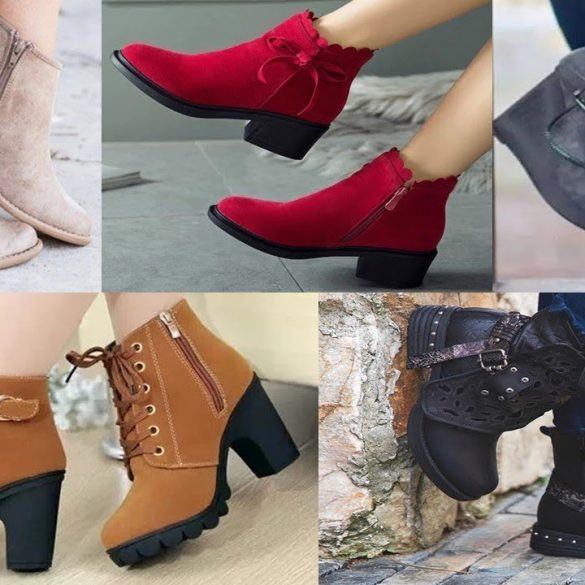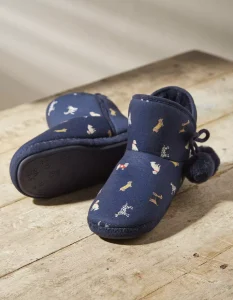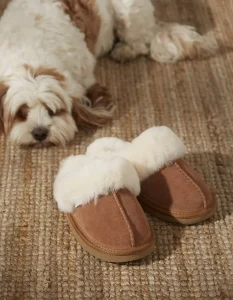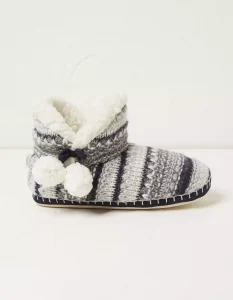A former police officer, Tim Slade, and business graduate Jules Leaver launched the company in the French ski resort of Méribel in 1988. At first, the pair purchased T-shirts in bulk, had them printed with designs specific to the resort, and then sold them to other skiers on the slopes, with the proceeds going solely toward their own skiing. They spent the next several years travelling to various ski resorts, where they continued to manufacture and sell ski and outdoor-related clothing and accessories.. Founded in 1993 on London’s Fulham Road, the FatFace shop was named after the face de Bellevarde ski slope in Val-d’Isère, and it was the first shop in the world for the brand. The couple sold 40 percent of the company to Livingbridge in 2000 for a total of $5 million. When Livingbridge sold its interest in FatFace to Advent International, a private equity firm, the deal was worth $1 billion.
After being acquired by private equity firm Bridgepoint Capital for £360 million in 2007, Fat Face generated a profit of $90 million for Slade and Leaver.
Sales at FatFace were severely affected by the Great Recession, prompting Bridgepoint to write off half of the company’s value. However, sales improved in 2010 and 2011, with the company posting a small profit in 2012.
citation needed Bridgepoint had planned to float a quarter of the company on the London Stock Exchange in 2014, with the hope of raising £110 million, but the plan was scrapped after prospective stockholders expressed a lack of confidence in the company.
In March 2019, Liz Evans took over as CEO from Anthony Thompson, who had served in the position since 2011.
Former Oasis/Warehouse CEO Evans had previously served as the company’s president and chief operating officer.
The former Marks and Spencer Chief Executive Stuart Rose was appointed Chairman of FatFace in 2013, taking over for Alan Giles, who had stepped down.
After a ransomware attack on their servers in January 2021, Fat Face revealed to customers and employees that they had paid a $2 million ransom to cyber criminals at Conti to unlock the data that had been locked up.
Dog Jumper Jersey Slipper Boots
Please keep in mind that coats and sweaters for dogs should only be worn if absolutely necessary when they are out in extremely cold weather. In the house, dogs should not be allowed to wear these types of clothing items because they can become excessively hot. Always remember to use your best judgement when deciding whether or not to coat your dog this winter.
Wool is extremely warm and acts as an excellent insulator, so it is recommended. Some dogs, however, may require hand washing or may experience itching as a result of using this product. It is possible to find dog sweaters made of acrylic or wool blends that are warm and soft while also being easy to care for.
Please keep in mind that coats and sweaters for dogs should only be worn if absolutely necessary when they are out in extremely cold weather. In the house, these items of clothing should not be worn by dogs, as it may cause them to overheat. You should always exercise caution in this situation.
If your dog stays in her sweater for the majority of the day, she should be fine. After about 4-8 hours, I’d recommend removing the sweater from your dog’s coat or ruffling it up with your hands to allow it to air out, and giving them a few hours to allow their skin to breath again. Afterwards, switch out your sweaters and wash them frequently.
Here’s a preview of Dog jumper jersey slipper boots FatFace:
Sienna Sheepskin Mule
Sheepskin boots are boots that are made of sheepskin leather. Because the wool on sheepskin has excellent insulating properties, such boots are frequently worn when the weather is cold. According to archaeological evidence, sheepskin boots have been worn and used in colder climates since at least 500 B.C., when a Mummy in Subashi, China was discovered wearing a pair of them.
Lambskin boots are footwear made from the hide of a sheep. Because the wool on sheepskin has excellent insulating properties, such boots are frequently worn when the weather is cold.
According to archaeological evidence, sheepskin boots have been worn and used in colder climates since at least 500 B.C., when a Mummy in Subashi, China was discovered wearing a pair of them.
During the harsh winters of Potidaea, according to Plato, the majority of the population would wrap their feet in warm felt and sheepskin to keep their feet warm.
Traveler William Knight observed Tibetans wearing sheepskin boots in the 19th century while on a trip through the Himalayas. In the case of female dancers, they wore boots in a variety of colours, whereas male horsemen wore large boots with heavy sheepskin trousers and coats. Warm boots, known as kamipak or marnguaq, are made of sheepskin by the Inuit people of the polar regions to keep them warm in the winter. These have been oiled to make them water resistant. In order to keep warm during the Russian winter, peasants frequently wore high boots lined with sheepskin.
Morlands, a Quaker company based in Glastonbury, was responsible for the production of sheepskin boots. In the early days of motoring, because open-topped vehicles were cold and windy, these were very popular and successful vehicles. Morland boots were worn by Sir Edmund Hillary’s expedition, which became the first to summit Mount Everest in 1953, and were made by Morland. The boots were not worn for climbing, but rather for warmth when the climbers were taking a break from the mountain.
If their aircraft is not pressurised and the heating is inadequate, pilots will need to dress in warm clothing. During the twentieth century, sheepskin jackets, helmets, and boots were frequently worn for this purpose.. During World War I, Major Lanoe Hawker created a pair of thigh-length sheepskin flying boots, which were manufactured by Harrods exclusively for him. These boots became popular among members of the Royal Flying Corps, where they were referred to as fug boots. These were eventually replaced by the 1930 and 1936 Pattern boot, which was then followed by the introduction of the Sidcot suit, after which more ordinary knee-length fleece-lined boots were adopted as a replacement option. Arctic pilots required particularly warm clothing, and heavy suspender boots made of sheepskin were worn in place of trousers for a long time. As soon as the technology for doing so became available, both clothing and boots were heated by electricity.
Ugg boots were created in Australia, and they were characterised by their soft sheepskin uppers and slip-on design.
For this name, a number of different derivations have been proposed, including references to a cartoon character, shorthand for “ugly,” and the “fug” boots worn during World War II.
This became popular among surfers as a way to keep their feet warm after a long day of surfing in the frigid winter sea. Several years ago, the UGG Australia brand was introduced to the United States, where it was sold in specialty retailers such as surf shops. Following that, they gained popularity among actors, actresses, and influential celebrities such as Paris Hilton, Leonardo DiCaprio, and Oprah Winfrey, which resulted in a surge in sales. In this market, rival brands such as EMU Australia are waging a fierce battle against one another.
Sheepskin boots are used in nursing to prevent bedsores, particularly at the heel, in patients who are confined to bed.
Here’s a preview Sienna sheepskin mule by FatFace:
Textured Knit Slipper Boots
There has been a documented history of slippers dating back to the 12th century, when the Vietnamese began to wear slippers. However, in the Western hemisphere, the earliest known date is 1478.
Peranakan Chinese wedding slippers dating back to the late nineteenth century
Slippers were first worn in China thousands of years ago. They were made of cotton or woven rush, had leather linings, and featured symbols of power, such as dragons, on their exteriors and interiors. Native American moccasins were not only functional, but they were also highly decorative. Featuring nature scenes and embellished with beadwork and fringe, their soft sure-footedness made them suitable for use indoors as well as outdoor activities such as walking and running. Inuit and Aleut people fashioned shoes out of smoked hare hide to protect their feet from the freezing ground inside their homes during the winter months. [a citation is required]
This type of footwear was required by Victorian men in order to keep dust and gravel outside their homes. Slippers were an opportunity for Victorian ladies to show off their needlepoint skills and to use embroidery as a decorative element on their outfits.
A pair of slippers with an open heel are typically made with a fabric upper layer that encloses most of the foot and the toes, but leaves the heel exposed. Typically, these are provided as part of the room rate in high-end hotels.
A heel guard prevents the foot from sliding out of the slippers, which are known as closed slippers.
Slipper boots are slippers that are designed to look like booties. They are typically furry boots with a fleece or soft lining, as well as a soft rubber sole, and are particularly popular with women. They are designed to look like sheepskin boots and can be worn outside.
Sandal slippers are cushioned sandals with soft rubber or fabric soles, similar to the cushioned sandals made famous by Birkenstock.
Evening slipper, also referred to as the “Prince Albert” slipper in honour of Albert, Prince Consort of the United Kingdom. A grosgrain bow or the wearer’s initials embroided in gold can be found on the side of the shoe, which is made of velvet with leather soles.
As a novelty item, some slippers are designed to look like something other than a slipper and are sold as a result. Typically, the slippers are made of soft and brightly coloured materials, and they can be found in a variety of shapes and sizes such as animal paws, vehicles, cartoon characters, and so on.
Slippers are not necessarily all shoes with a soft, fluffy interior. Any shoe with a rubber sole and laces that is intended for outdoor use is considered a standard outdoor shoe. In India, rubber chappals (flip-flops) are worn as indoor shoes, and they are made of rubber.
Here’s a preview of Textured knit slipper boots by FatFace:




